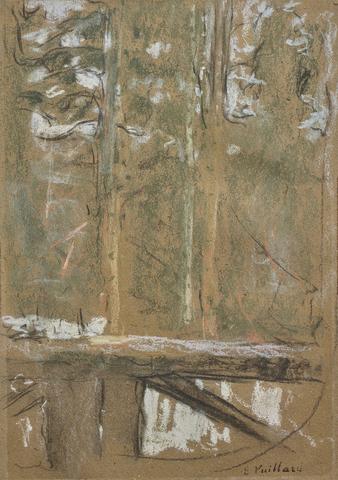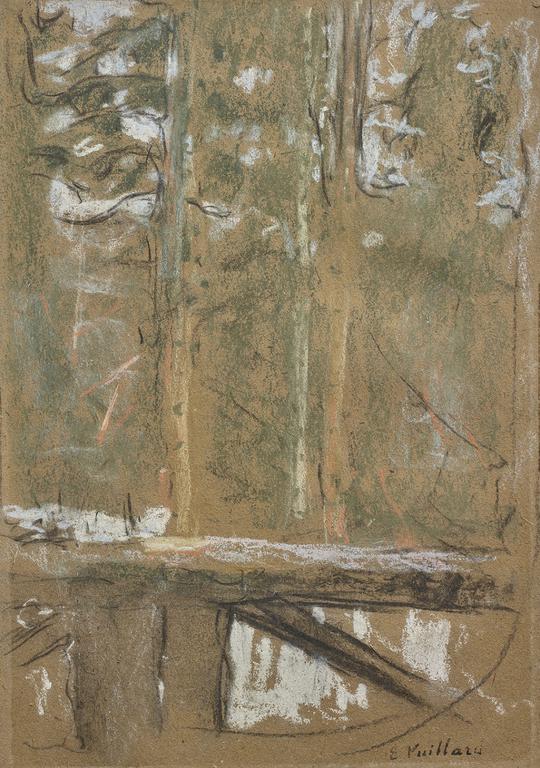
Le Balcon sur les sapins
Édouard Vuillard (1868 Cuiseaux - 1940 La Baule)
1917
Pastel sur papier ; cachet de l'atelier « E. Vuillard » en bas à droite ; 25 x 17 cm
Provenance :
Atelier de l'artiste ; Paris, collection Léon Ledoux ; Paris, Hôtel Drouot, 10 février 1969 ; Vendôme, Rouillac, 20 mars 2022.
Bibliographie :
A. Salomon et G. Cogeval, Vuillard, Catalogue critique des peintures et pastels, Paris, 2003, p. 1184, n°X-18.
En février 1917, Vuillard passe 3 semaines à Gérardmer, dans les Vosges, en tant que peintre aux armées. Peintre de l'intimisme, il n'est évidemment guère à son aise dans cette ville de garnison où l'on combat d'abord l'ennui et le froid. Dans ce secteur les épisodes les plus meurtriers ont eu lieu en 1914 et 1915.
Vuillard en rapporte une dizaine de pastels. Celui-ci est le plus introspectif. Il y retrouve une forme d'intimisme « à l'envers » : la balustrade, comme plus tard dans certains tableaux de Bonnard, marque la frontière entre le « dedans » et le « dehors ». Le peintre peut se concentrer sur ce qui lui importe vraiment, et que décrit si bien le critique Claude Roger-Marx : « notation d'une atmosphère générale, établissement des lignes directrices de la composition, choix d'une harmonie dominante. »
On peut rapprocher ce pastel émouvant, dans un état parfait et d’une évidente modernité (on peut penser aux recherches, quelques années auparavant, de Mondrian), d'un passage, tout aussi sobre, du journal de Vuillard : « samedi 17 matin : temps de dégel grande promenade (…), sapins monotones ; après déjeuner écris, petit pastel. »
